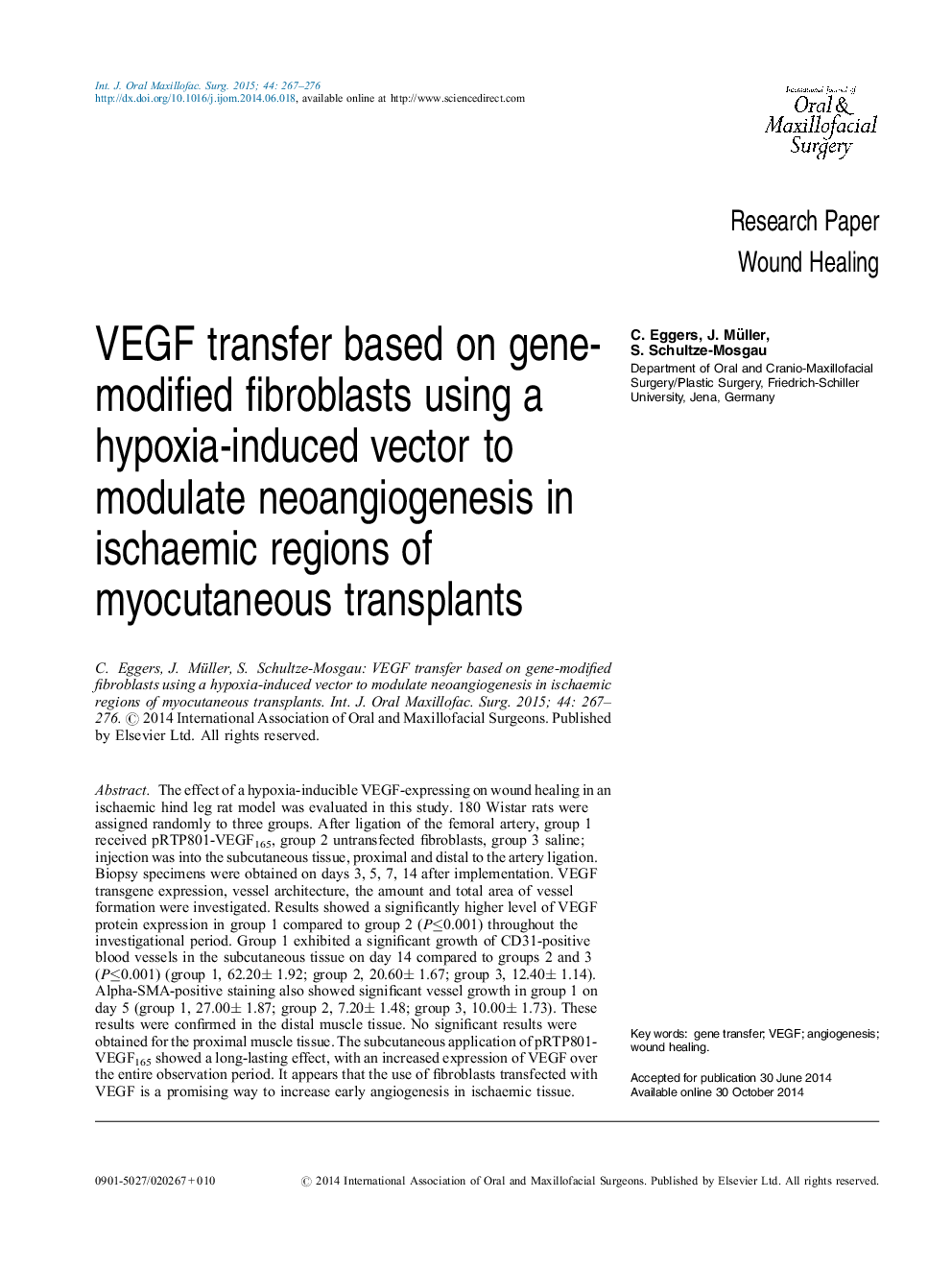| Article ID | Journal | Published Year | Pages | File Type |
|---|---|---|---|---|
| 3132327 | International Journal of Oral and Maxillofacial Surgery | 2015 | 10 Pages |
The effect of a hypoxia-inducible VEGF-expressing on wound healing in an ischaemic hind leg rat model was evaluated in this study. 180 Wistar rats were assigned randomly to three groups. After ligation of the femoral artery, group 1 received pRTP801-VEGF165, group 2 untransfected fibroblasts, group 3 saline; injection was into the subcutaneous tissue, proximal and distal to the artery ligation. Biopsy specimens were obtained on days 3, 5, 7, 14 after implementation. VEGF transgene expression, vessel architecture, the amount and total area of vessel formation were investigated. Results showed a significantly higher level of VEGF protein expression in group 1 compared to group 2 (P≤0.001) throughout the investigational period. Group 1 exhibited a significant growth of CD31-positive blood vessels in the subcutaneous tissue on day 14 compared to groups 2 and 3 (P≤0.001) (group 1, 62.20± 1.92; group 2, 20.60± 1.67; group 3, 12.40± 1.14). Alpha-SMA-positive staining also showed significant vessel growth in group 1 on day 5 (group 1, 27.00± 1.87; group 2, 7.20± 1.48; group 3, 10.00± 1.73). These results were confirmed in the distal muscle tissue. No significant results were obtained for the proximal muscle tissue. The subcutaneous application of pRTP801-VEGF165 showed a long-lasting effect, with an increased expression of VEGF over the entire observation period. It appears that the use of fibroblasts transfected with VEGF is a promising way to increase early angiogenesis in ischaemic tissue.
